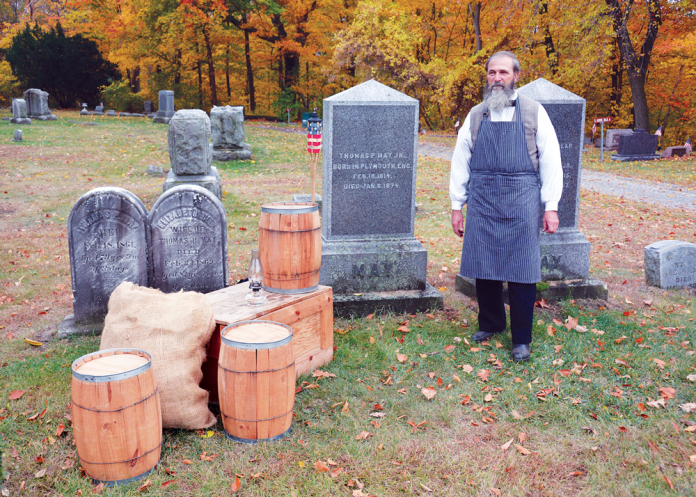
Much like museums and historic homes, cemeteries offer a glimpse into the lives of a community’s citizens — from the elite to the unknown. Gravesites and gravestones date back to the early 1800s in the Straits of Mackinac. Mackinac Island itself has three cemeteries: Protestant Cemetery, St. Ann’s Catholic Cemetery and Fort Mackinac Post Cemetery — one of four national cemeteries in the state maintained by the U.S. Department of Veterans Affairs (cem.va.gov), along with Fort Custer in Battle Creek, Great Lakes in Holly Township and Lakeside Cemetery Soldiers’ Lot in Port Huron. A facility also operates at the Grand Rapids Home for Veterans Cemetery.
Detroit’s Elmwood Cemetery (elmwoodhistoriccemetery.org) is the oldest continuously operating nondenominational cemetery in Michigan, established in 1846. Encompassing 86 acres of park-like grounds, it is the final resting place for many significant figures in the state’s history, including Lewis Cass, former territorial governor, U.S. senator, U.S. secretary of war and U.S. secretary of state; former Detroit Mayor Coleman Young; baseball Hall of Famer Sam Thompson; and entrepreneur Hiram Walker, founder of Hiram Walker and Sons Distillery. Tombstone Tales Tours guided walks are offered free on select dates during the summer and fall, with the next scheduled for 8:30 a.m. Oct. 8.
The Kalamazoo Jaycees (kalamazoojaycees.org) weave haunting stories into their walking tours of Mountain Home Cemetery, located on the edge of downtown across from the historic Henderson Castle (former owners Frank and Mary Henderson are among the notables buried here). The first interment was in 1849, and since that time key figures in the city’s history have been added to the burial list, including Albert M. Todd (“the Mint King”), Ira and Charles Burdick, William Upjohn and U.S. Sen. Charles Stewart. Tours run on various Friday and Saturday nights in October, with proceeds benefitting a local nonprofit.
Ypsilanti’s Highland Cemetery depicts a garden or rural design concept popular in the 19th century, meant to create a tranquil place to pay respects among the beauty of a natural setting. Rolling hills and towering trees house and protect the various headstones and monuments adorned with the names of the town’s former residents, such as the Starkweather Memorial Chapel or the Quirk Mausoleum. The Ypsilanti Historical Museum (ypsilantihistoricalsociety.org) hosts evening Lantern Tours on Friday, Saturday and Sunday evenings, Oct. 14-30, from 7-9 p.m.
The Plymouth Historical Museum (plymouthhistory.org) invites to you meet some of the characters from the town’s past at the Plymouth Ghosts Cemetery Walk at Riverside Cemetery, Oct. 29. The 60- to 90-minute tours begin at 4 p.m. with small groups setting out every 15 minutes until 7:45 p.m. Set amongst 12 acres of wooded hills in Hines Park, this cemetery was established in 1880 to accommodate overcapacity at a smaller community site. Among the noted buried here are the first female judge in Michigan, Phoebe Ely Patterson, and founding families such as Wilcox, Blunk and Starkweather.
— Tai Alexander, Michigan BLUE Magazine







Facebook Comments